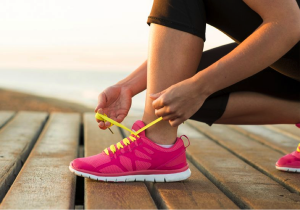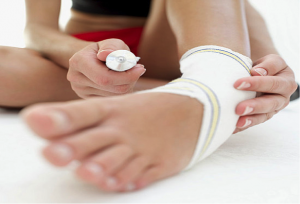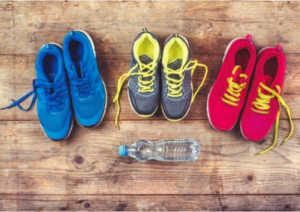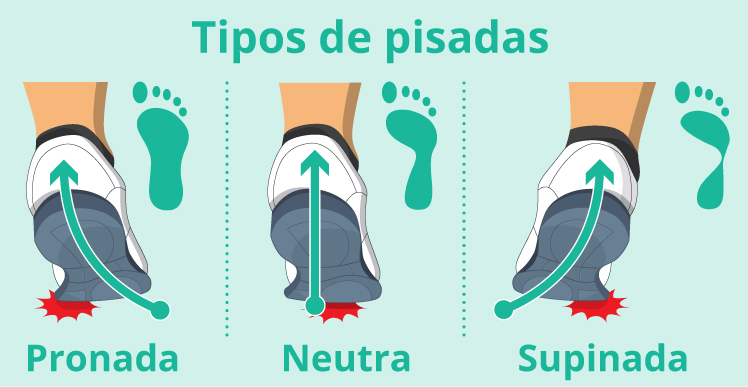The good performance of a physical activity depends on some factors, among which is the use of appropriate clothes and accessories. Tennis, for example, helps a lot in preventing injuries and comfort when exercising , being, therefore, indispensable so that the body does not suffer chronic problems with the passing of time.

THE IDEAL TENNIS
The use of tennis in physical activities has as main objective to minimize the consequences of the wrong step on the ground and the overhead generated by the impact of some exercises , thus avoiding accidents, injuries and fractures in both feet and on the knees, hips and vertebrae. That’s because, this impact that the body suffers during physical activity is transmitted from the tip of the feet to the spine.
For this reason, in addition to the use of sneakers being essential, you must always pay attention to the quality of your material. Below we list some characteristics that should be observed when choosing the ideal tennis for physical exercise:
– DAMPING : The tennis cushioning system helps to reduce impact on the joints according to the person’s body weight, avoiding possible joint injuries mainly onankles and knees.

When choosing, shoes should preferably be higher on the back, lower on the front and soft in both regions, to cushion the impact of the exercise.
– TRACTION: In shoes, traction is nothing more than contact with the ground and slip resistance , or slip , of the foot with the ground.
When choosing, we should always observe the sole of the shoe. Soles with soft rubber have more grip on the ground, thus preventing the person from slipping.
– FLEXIBILITY: Related to internal comfort, flexibility is commonly used in activities that require certain elasticity to perform displacements.
By taking the shoe in hand and twisting it, we were able to analyze this softness.
– VENTILATION: A shoe with good ventilation is also important for good performance and safety. It should have a good air intake as well as a sweat outlet.
Waterproof sneakers are not good options for physical activities , as there is no air exchange inside, keeping your feet moist.
– DURABILITY: It is practically the duration that the material resists with the action of time , as well as the depreciation during the execution of the sports practice.
If your shoe is already worn out, it is a sign that it is time to replace it with a new one.
– LIGHTNESS: It is basically the weight of the shoes, and how that weight can influence the final performance.
The lighter the shoe, the less you will feel it when exercising.
– STABILITY: The stability of the shoe is related to neutralization of the type of step according to the activity performed.
A stable shoe is responsible for keeping your foot firmly on the ground in any type of exercise.
Taking into account these characteristics, it is possible to make a choice of the ideal footwear for each type of physical activity, thus maximizing sports performance and at the same time minimizing the risk of injury.

WHAT’S YOUR STEP?
The way you step changes a lot from one individual to the next. Generally, there are three different types of steps: pronated, supinated and neutral. They are determined from the anatomical characteristics of each, such as the types of feet, knees and flexibility in the joints .
Pronated footstep happens when the heel touches the ground and the foot squirms inward, using the big toe to gain momentum, and only then straightening up. Although a little pronation is necessary for the foot to function properly, over-exercising can cause injuries.
The step Supinated is the opposite of Pronada, and it happens when the weight is applied to the outer edge of the foot during the exercise, picking up momentum with the outside and the little finger. This type of foot requires flexible shoes with good cushioning. The arch of the high foot is usually associated with supination.
In step neutral the foot touches the floor supporting the outside of the heel and moves slightly inward, following in a straight line until the front of the foot touches whole on the ground.
To take the test and find out what your step is, rest your feet wet with ink on a sheet of paper and watch the engraved print . Another option is to wet the bottom of your foot and walk over newspapers . The image formed from both the leaf and the newspaper will help to know the way you step.
While it is possible to do these home tests, if you feel any pain or discomfort, the best way to find out the problem is to see an orthopedist.
DO NOT SHARE YOUR TENNIS
Experts recommend that sneakers not be loaned to other people. That’s because each person has different styles and characteristics such as weight, height, age, sex, body posture and type of step. With all these differences, the ideal shoe for one may not be ideal for the other.

